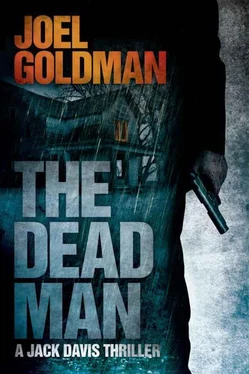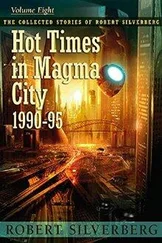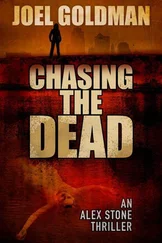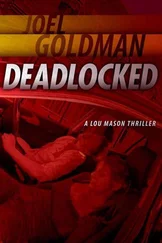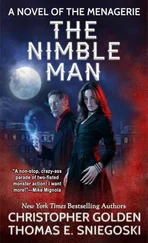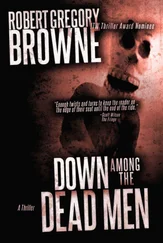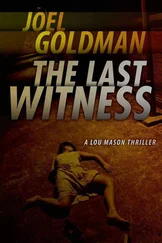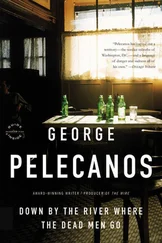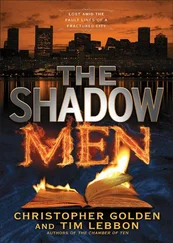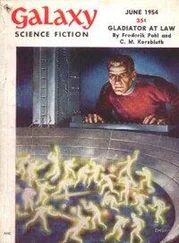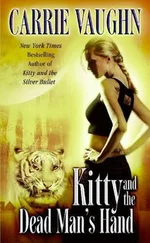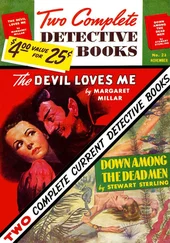Joel Goldman - The Dead Man
Здесь есть возможность читать онлайн «Joel Goldman - The Dead Man» весь текст электронной книги совершенно бесплатно (целиком полную версию без сокращений). В некоторых случаях можно слушать аудио, скачать через торрент в формате fb2 и присутствует краткое содержание. Жанр: Триллер, на английском языке. Описание произведения, (предисловие) а так же отзывы посетителей доступны на портале библиотеки ЛибКат.
- Название:The Dead Man
- Автор:
- Жанр:
- Год:неизвестен
- ISBN:нет данных
- Рейтинг книги:5 / 5. Голосов: 1
-
Избранное:Добавить в избранное
- Отзывы:
-
Ваша оценка:
- 100
- 1
- 2
- 3
- 4
- 5
The Dead Man: краткое содержание, описание и аннотация
Предлагаем к чтению аннотацию, описание, краткое содержание или предисловие (зависит от того, что написал сам автор книги «The Dead Man»). Если вы не нашли необходимую информацию о книге — напишите в комментариях, мы постараемся отыскать её.
The Dead Man — читать онлайн бесплатно полную книгу (весь текст) целиком
Ниже представлен текст книги, разбитый по страницам. Система сохранения места последней прочитанной страницы, позволяет с удобством читать онлайн бесплатно книгу «The Dead Man», без необходимости каждый раз заново искать на чём Вы остановились. Поставьте закладку, и сможете в любой момент перейти на страницу, на которой закончили чтение.
Интервал:
Закладка:
I try to run away but my arms and legs won't move. I'm completely paralyzed. I try to scream but nothing comes out. He rapes me over and over and when he's done he sticks something in my vagina and leaves me naked on the ground where everyone can see me. I wake up and can feel him on me. I take a shower to get rid of the smell but it doesn't go away. I can't tell my fiance about this because I'm afraid he won't want to marry me. He sees what happens when I wake up in the middle of the night and asks me what's going on. I lie to him and he doesn't believe me and we end up having horrible fights. I take antianxiety and antidepressant medications that get me through the day. Everyone sees me as perky little Anne from HR but I don't know how much longer I can pretend that everything is okay when every night before I go to sleep I pray that I won't wake up in the morning.
I put her file down. All I could do was shake.
Chapter Fifty-one
Anne Kendall's description of her nightmare turned my theory of a serial killer whose crimes had grown progressively more violent on its head, replaced by a theory that better matched the facts. The killer had staged each murder to mimic the victims' nightmares. Regina Blair dreamt that she would fall to her death. Tom Delaney dreamt that he would commit suicide. Walter Enoch dreamt that he would suffocate. Anne Kendall dreamt that her stepfather raped her, leaving her naked, violated, and exposed. Though she didn't die in her dream, the killer added his own ending to her nightmare.
Had Anne been the first victim, I would have struggled to explain why the level of violence decreased rather than increased with the subsequent murders. That fact alone may even have been sufficient reason to exclude Anne's murder from the others.
The brain, Kate had once explained to me, organizes information into patterns based on the sequence in which it receives the information so that it can understand and process similar data in the future. She called this reliance on the order in which we learn things sequential or vertical thinking. When we encounter information that doesn't fit the pattern, we need to blow it up, start over, and build a new one that fits all the information using what she described as lateral thinking and I understood as thinking outside the box.
I had pictured a serial killer gradually losing control, taunting us with our failure to recognize what was happening or stop him once we figured it out. But this killer was in control, taking his victims from the dream project pipeline. That meant the killer had to have access to the volunteers and their files, which excluded Anne's boyfriend, Michael Lacey. It also excluded Leonard Nagel because he was a stranger to three out of four of the victims. While he could have stalked and harassed Anne Kendall, neither Tom Delaney nor Walter Enoch would have opened their doors for him. All of which brought me back to Anthony Corliss. I may have misunderstood his methodology but that didn't mean I was wrong about his guilt.
There was still the question of why Corliss chose these victims, whether they shared something in common besides their participation in the dream project. I found the answer in Delaney's and Blair's files. Maggie Brennan had written reports analyzing their test data and interviews she had conducted with them, noting that both had admitted being sexually abused when they were children, Delaney by a Boy Scout leader and Blair by a summer camp counselor. Walter Enoch's mother had abused him, though not sexually, and Anne Kendall's stepfather had repeatedly raped her.
It wasn't a leap of faith to conclude that the killer had probably also been abused as a child, his rage fueling these murders. Maggie Brennan had told me that she had spent her life studying victims and perpetrators of violent crime. I wanted her take on my theory and I wanted to know whether Corliss had confided in her that he had been abused as a child, questions I needed answered before someone else's dreams came true.
I took my time going over the rest of his office, no longer caring whether I made it to the retired cops' lunch or whether Corliss knew about my search. I would catch up to Tom Goodell and his cold case as soon as I could. It was more important to find the evidence that would close the book on Anthony Corliss. Short of a confession, the best evidence was the souvenirs the killer took from his victims.
I combed the office, pulled books off shelves one at a time, removed desk drawers looking for anything that might be taped to the inside of the desk frame. I put a chair on Corliss's desk, stood on it and popped open ceiling tiles scanning the hidden crawl space, finishing my search an hour later without finding Tom Delaney's bullet punctured books, Regina Blair's jewelry, Anne Kendall's severed finger, or Wendy's letter.
I called Quincy Carter again and left another message, hoping his unavailability meant that he was closing in on Corliss faster than me. That would be both good news and bad news. I wanted Corliss off the streets but I also wanted Wendy's letter so I could deal with Dolan and Kent on my own terms. Corliss's house was the best place to look.
Corliss didn't have a phone directory in his office. I did a search on his desktop computer, finding his address on Cherry between Fifty-third and Fifty-fourth, and entered his phone number in my cell phone. I tucked the Delaney, Blair, Enoch, and Kendall files under my arm and turned off the light. Looking around his office, I had no doubt he would realize that someone had tossed it; any concerns I had about that long since passed.
Crestwood, where Corliss lived, was an area I had considered when I moved in from the suburbs. Its borders were Fifty-third on the north, Fifty-sixth on the south, Oak on the west, and Holmes on the east. Built beginning in 1919 by Kansas City's visionary and legendary residential developer, J. C. Nichols, it was known for its Colonial and Tudor homes. Beyond the architecture, it was another of Kansas City's many long-established neighborhoods of well-kept homes and welcoming families, young, old, and now ethnically diverse.
After Corliss was arrested and when the inevitable television crews showed up, its residents would shake their heads and say that Crestwood was the last place on earth they would expect to find a serial killer. The greater surprise would be if they said it wasn't one of those singular, secure last places.
The 5300 block of Cherry was a five-minute drive from the institute. It was a quiet side street, not providing a shortcut to anywhere; the kind of street you didn't take unless you belonged there and where well-meaning neighbors were serious about the signs posted on both sides of the street proclaiming it a neighborhood watch area.
I circled the block, disappointed that Corliss's driveway wasn't brimming with police and his house wasn't ringed in yellow tape. I didn't see any cars or vans parked down the block or in driveways that were obvious surveillance vehicles. From all appearances, this peaceful street and Corliss's limestone and brown brick Tudor house, with its detached garage and arched entrance, oak trees made leafless by winter, and six-foot evergreens flanking the front door like sentries, was the last place on earth anyone would look for a killer. On my second pass, I parked in front of a house two doors down and on the opposite side of the street facing away from Corliss's house.
I never forget about my movement disorder but there are times when I pretend that it isn't real as if my mind can trick my brain into calling the whole thing off. Mornings are the best time to play that game when I'm rested and fresh and the day is a blank check and there's no reason I can't do whatever I want. It's harder to pull the trick off when, like now, the blank check bounces and the brain fog rolls in and my muscles stretch my body to a hair trigger pull. That's when I have to choose between backing down and stepping up; between the more you do the more you do and what the hell was I thinking.
Читать дальшеИнтервал:
Закладка:
Похожие книги на «The Dead Man»
Представляем Вашему вниманию похожие книги на «The Dead Man» списком для выбора. Мы отобрали схожую по названию и смыслу литературу в надежде предоставить читателям больше вариантов отыскать новые, интересные, ещё непрочитанные произведения.
Обсуждение, отзывы о книге «The Dead Man» и просто собственные мнения читателей. Оставьте ваши комментарии, напишите, что Вы думаете о произведении, его смысле или главных героях. Укажите что конкретно понравилось, а что нет, и почему Вы так считаете.
